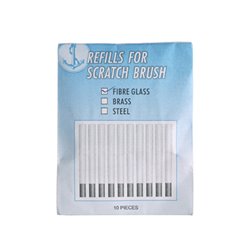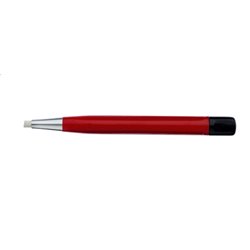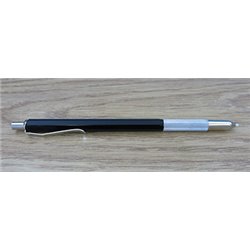There is of course the old tried and tested method, the track rubber which does the job, no railway modeller should...
No products
Product successfully added to your shopping cart
There are 0 items in your cart. There is 1 item in your cart.
Search Tips
Christmas and New Year
We are dispatching orders every weekday apart from Christmas Day, Boxing Day and New Year's Day.
If you order is time critical, select next day delivery at checkout.
The shop in Sandown is closed from 25th December, reopening on 30th December.
What can I do with a fibreglass pen?
A fibreglass pen, also known as a glass fibre pencil or brush, is an incredibly handy tool for any scale modeller. It consists of a bundle of fine fibreglass strands contained in a retractable pen-like holder. By twisting or pushing the top, you can extend or retract the fibres, adjusting the abrasive surface as needed. This tool is primarily used for cleaning, surface preparation and gentle abrasion. When working on intricate details of scale models, a fibreglass pen can provide a level of control and precision that standard abrasives simply cannot match.
One of the key benefits of using a fibreglass pen is its ability to reach into small areas and clean or smooth surfaces without damaging delicate details. When you're dealing with tiny parts or hard-to-reach spots such as panel lines or crevices on a model, a fibreglass pen can remove dirt, paint or oxidation with incredible accuracy. This makes it particularly useful when preparing a surface for painting, as it can help remove any imperfections or oils that might prevent the paint from adhering properly.
The pen's fibres act as fine abrasive tools ideal for cleaning off small amounts of rust, tarnish or even slight layers of paint. If you've been working on metal parts or photo-etched details, the fibreglass pen is perfect for giving them a clean, polished look before they’re attached to the model. It's a less aggressive alternative to sandpaper, which can sometimes be too harsh for smaller or more fragile pieces. Additionally, its fine point allows you to target specific areas without affecting the surrounding parts.
Another great use for the fibreglass pen is in weathering effects. When simulating wear and tear on a model, particularly in areas like vehicles, aeroplanes or ships, you can use the pen to gently scuff the paint, creating subtle effects that mimic real-life deterioration. Whether you're trying to create chipped paint or surface rust, the pen gives you a lot of control over the amount of wear you're introducing which can add an extra level of realism to your model.
One important thing to remember when using a fibreglass pen is that the tiny glass fibres can be hazardous if you're not careful. They can break off and become airborne, and if they come into contact with your skin, eyes or lungs, they can cause irritation. It's always best to wear gloves and, if possible, use eye protection when working with the pen. A quick clean-up of your workspace after using the pen can also help avoid any stray fibres from causing issues later on.
In terms of maintenance, a fibreglass pen is relatively low-effort. Over time, as you use it, the fibres will wear down, but you can simply extend more from the barrel to keep working. Once the fibres have been completely used up, replacements are usually easy to find and swapping them out is straightforward.
Ultimately, if you're serious about scale modelling, adding a fibreglass pen to your toolkit is a smart choice. Its precision and versatility make it an invaluable asset for everything from surface preparation to detailing and weathering. Whether you're working on plastic, resin or metal, this tool will quickly become one of your go-to instruments for perfecting your models.
Click here to receive the tips weekly in your mailbox. You can unsubscribe at any time.










